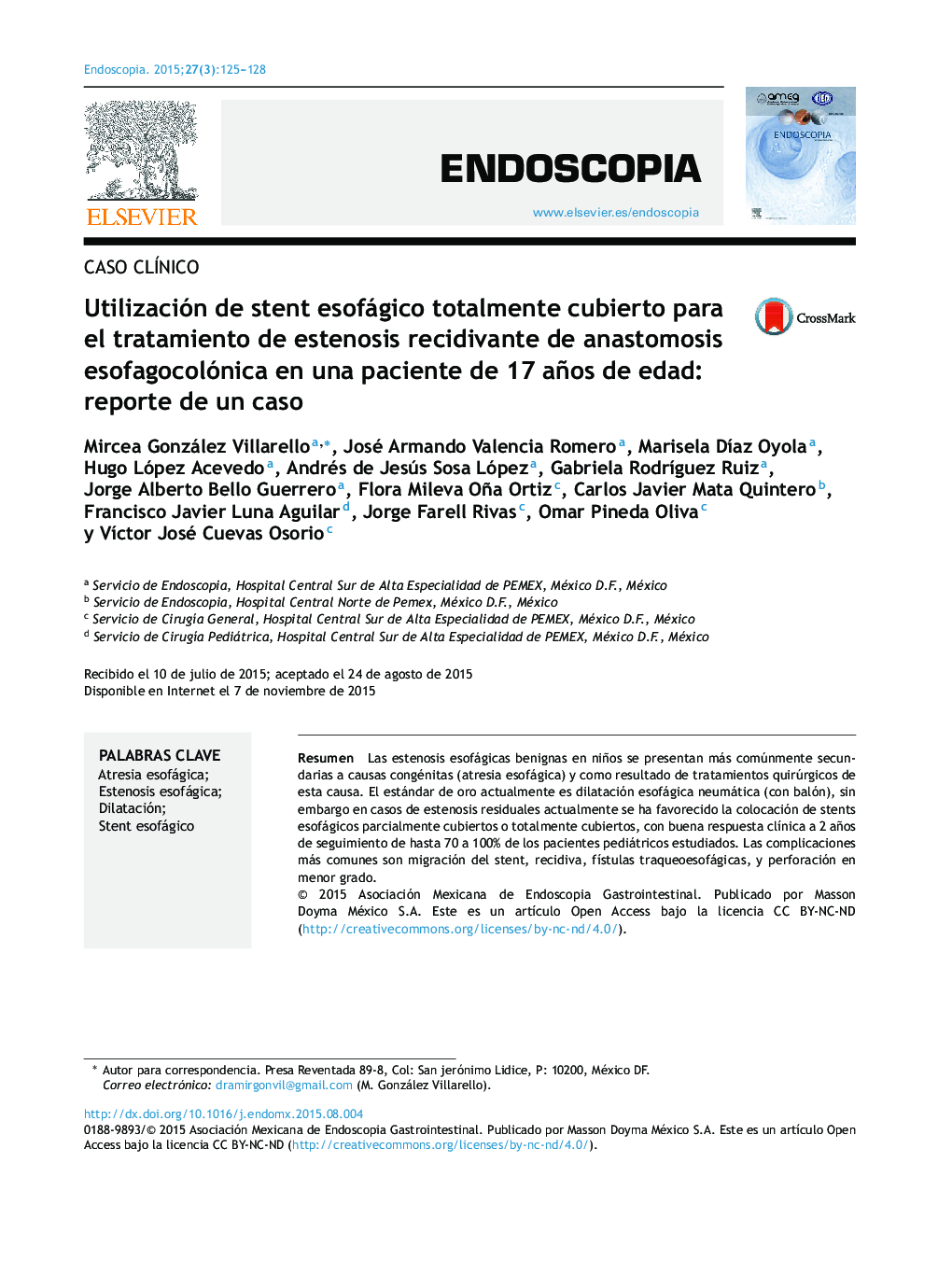| کد مقاله | کد نشریه | سال انتشار | مقاله انگلیسی | نسخه تمام متن |
|---|---|---|---|---|
| 3287511 | 1209438 | 2015 | 4 صفحه PDF | دانلود رایگان |
ResumenLas estenosis esofágicas benignas en niños se presentan más comúnmente secundarias a causas congénitas (atresia esofágica) y como resultado de tratamientos quirúrgicos de esta causa. El estándar de oro actualmente es dilatación esofágica neumática (con balón), sin embargo en casos de estenosis residuales actualmente se ha favorecido la colocación de stents esofágicos parcialmente cubiertos o totalmente cubiertos, con buena respuesta clínica a 2 años de seguimiento de hasta 70 a 100% de los pacientes pediátricos estudiados. Las complicaciones más comunes son migración del stent, recidiva, fístulas traqueoesofágicas, y perforación en menor grado.
Benign oesophageal strictures in children are commonly developped secondary to genetic causes, such as oesophageal atresia and the its surgical treament. The reference standard is curently balloon dilatation. However, in cases of refractory strictures the use of a partially or fully covered self-expandable metal stent is recommended, as it has around 70 to 100% positive results after a follow up of 2 years. The major complications were stent migration, tracheoesophageal fistulas, and perforation.
Journal: Endoscopia - Volume 27, Issue 3, July–September 2015, Pages 125–128
